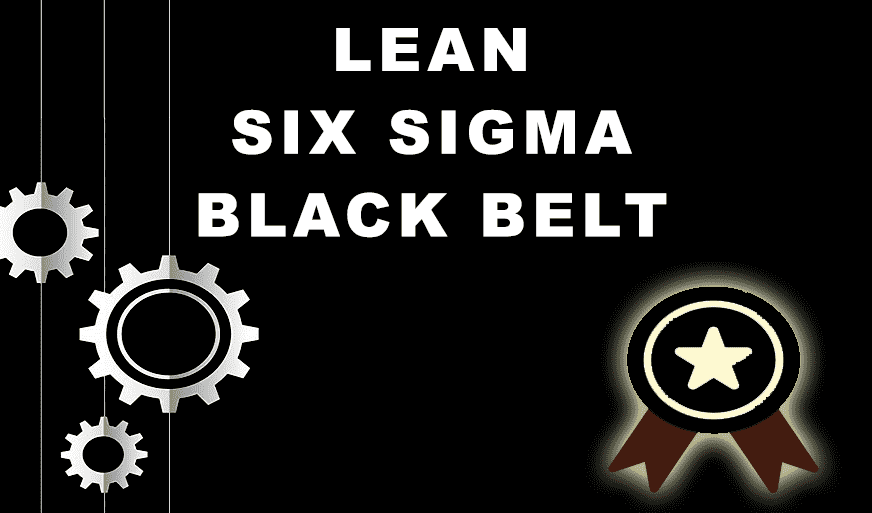What are Quality Standards? | A Guide to ISO Standards
-
 By Sushmith
By Sushmith - Published on Jun 4 2024

Table of Contents
Understanding Quality Standards
Imagine a world where every product you buy is safe, reliable, and functions exactly as intended, and every service interaction leaves you feeling confident and satisfied. That's the power of quality standards. These standards are the guidelines and specifications that organizations follow to ensure consistent quality in their processes and products. Think of quality standards as the benchmark that dictates the quality of any product or service.
By following these benchmarks, products and services ensure consistency, safety, and efficiency. Multiple industries, from healthcare to aerospace, all follow these standards to make sure of their promises. But, do we really need these standards?

Quality standards are primarily used to define the characteristics of a product, service, or process that need to be met in order to ensure authenticity, safety, and quality throughout the production and delivery chain. These standards not only help improve customer satisfaction but also reduce risks, improve product reliability, reduce waste and errors, and also help organizations compete well in the market. This, in turn, guarantees a level of performance that customers can trust.
Now, let's dive in depth into the types and verities of quality standards.
Key Quality Standards Explained
The International Organization for Standardization (ISO) is a leading authority in quality management. And the categorization of these standards is vast, with different standards catering to specific industries. Now, let’s explore some of the most prominent standards:
1. The ISO 9000 Family:
The ISO 9000 standard is the foundation for quality management systems. The standards of this family provide a structured framework for improvement in organizational standards. The ISO 9000 standards are majorly focused on QMS and provide organizations with necessary guidelines. These help in implementing and maintaining effective quality management practices to ensure that they consistently meet customer requirements while following regulatory standards. Some of the standards included in this family are ISO 9001, ISO 9002, and ISO 9003, with ISO 9001 being the most widely recognized and implemented standard.
2. ISO 9001:
The ISO 9001 is a commonly recognized standard among the standards of ISO 9000 family. It outlines the key principles and requirements for a robust quality management system by highlighting the need to comply with customer focus, process approach, improvement, and relationship management. This requires organizations to showcase and highlight their ability to provide quality products and services consistently, meeting all regulatory requirements of this standard. Organizations seeking ISO 9001 approval undergo a rigorous process of documentation, implementation, and audit to demonstrate their commitment to quality.
3. ISO 13485:
ISO 13485 is specific to the medical device manufacturing and servicing industries, providing requirements for a quality management system particularly around production, design, and servicing of medical devices. An agreement with ISO 13485 ensures that medical devices meet regulatory requirements and enhances product safety and efficacy.
4. ISO 3834:
ISO 3834 is the basis for quality requirements for welding, covering both the manufacturer's quality management system and the technical aspects of welding. This ensures that welded products meet specified standards of safety and reliability. These standards cover essential quality aspects like welding procedures, inspection, testing, documentation of personnel competence, and more.
5. AS9100:
AS9100 is another key quality standard, particularly developed for organizations and businesses of the aerospace industry. This standard is designed by incorporating the ISO 9001 requirements with additional aerospace-specific criteria to keep product safety and reliability in check. This ensures the quality and safety management system of critical components in aerospace manufacturing, maintenance, and service organizations.
6. IATF 16949:
The IATF 16949 quality standard is designed for the automotive sector, mainly focusing on quality management systems and frameworks used in automotive production and relevant services. The standard requirements and guidelines are standardized to highlight defect prevention, continuous improvement, and risk-based thinking that help enhance product quality and customer satisfaction.
Explore all our ISO training programs on our official website: Sprintzeal.com
The Importance of Quality Certifications
Certifications against these quality standards are like gold seals of approval, regardless of the industry type. Quality certifications are considered a credential that indorses an organization's commitment to providing quality and assurance to their customers to build and expand. They enhance reliability, improve trust, and highlight acquiescence with industry standards.

Such certifications help organizations get identified for their authentic methodology for customer loyalty and trust. This also helps gain a competitive advantage, differentiate the marketplace, and access the latest business opportunities. Let’s understand these in detail:
- Enhanced Customer Trust:
A recognized/standardized quality management certification signifies a trustworthy organization's value and commitment to quality, in turn boosting customer trust and confidence. - Customer Confidence:
the world runs of evidences. Hence, most of the customers are more likely to opt the products and services from certified organizations, knowing they prioritize quality. - Streamlined Operations:
By implementing a standardized Quality Management System, organizations can optimize processes, minimize errors, and improve efficiency in addition to market value. - Regulatory Compliance:
Certain industries require compliance with specific quality standards. Getting these Certifications helps ensure a structure for these regulations. - A competitive edge:
Certification gives you the necessary dominance in the competition, highlighting your sheer commitment to quality. - Improved Market Access:
Many industries require suppliers to be certified, opening doors to new business opportunities.
The Certification Process and Training for Quality Standards
Organizations and businesses have to go through the certification process that involves a few steps. A few of these steps include assessment, documentation, implementation, audit, review, and final certification audit. Organizations seeking certification must demonstrate and maintain the quality management system requirements of the relevant standard and undergo audits conducted by accredited certification bodies like PECB. The process of certification varies with respect to the standard chosen and the complexity in management of operations of the organization. This also includes factors like thorough analysis of performance metrics, policies, processes, and more.
Training plays a key role here, which helps aid organizations and individuals with the knowledge, skills, and competencies needed to understand, implement, and maintain quality standards effectively. Quality management training courses, such as ISO 9001 lead auditor certification, provide professionals with in-depth insights into quality management principles, practices, and techniques. Training programs cover various aspects of quality management, including ISO standards, auditing techniques, risk management, continuous improvement, and regulatory requirements.
Application of Quality Standards in Various Industries
Quality standards find application across numerous industries like manufacturing, healthcare, aerospace, automotive, construction, telecommunications, and more. Adapting to these quality standards aids organizations in consistently delivering products and services that meet customer expectations, ensuring product reliability and safety. This in turn results in improved efficiency with reduced risks and costs.
For example, in the healthcare sector, ISO 13485 certification is critical for medical device manufacturers to demonstrate compliance. Similarly, in the automotive industry, IATF 16949 certification is a prerequisite for suppliers seeking business with any automotive manufacturers, irrespective of their market scale.
Challenges and Tips for Maintaining Quality Standards
Despite these numerous benefits, organizations may come across challenges in maintaining these standards effectively. A few of such challenges are resource constraints, resistance to change, the complexity of standards, and changes in the standardized requirements. To overcome these challenges, organizations adopt smart strategies that build their culture of quality, provide adequate resources and training, and leverage technology solutions to monitor and improve.

Let’s discuss some of these strategies:
Leadership Commitment: Ensure strong leadership commitment and involvement in quality initiatives to drive organizational culture and accountability.
Employee Engagement: Encourage employees to provide ideas and suggestions for organization’s process improvement by fostering a culture of empowerment and employee involvement.
Continuous Improvement: Embrace a philosophy of continual improvement, leveraging tools and techniques such as Lean Six Sigma to identify and eliminate waste, reduce variability, and optimize processes.
Risk Management: Implement robust risk management processes to mitigate risks that improve the impact of quality and compliance.
Training and Development: Make employee training and development programs an important investment, to up skill employees with necessary skills and knowledge that help excel in quality management and support organizational goals.
Conclusion
Quality standards are one of the key implementations that must necessarily be done by organizations that strive for competitiveness and customer satisfaction. These standards guide businesses towards achieving and maintaining the highest levels of quality, safety, and customer satisfaction. For organizations to demonstrate their commitment to quality, they must invest in training, pursue quality certifications, and adopt best practices to drive improvement and thrive.
At Sprintzeal, we are a leading provider of professional training courses designed to train professionals with the advanced knowledge and skills needed to excel in quality management and achieve relevant certifications. Our comprehensively designed training programs cover a wide range of industry domains like Quality Management, Project Management, IT Service Management, Cybersecurity, and more.
Explore our wide range of services and take the first step toward achieving your dream job. Start your journey towards excellence today! Contact us now!
Our newsletter is free! Subscribe to stay updated with such informative insights and get early access to exclusive training discounts!
Subscribe to our Newsletters
Popular Programs
Trending Now
Top Career benefits of Lean Six Sigma Green Belt
ArticleLean methodology, Six Sigma methodology and Lean Six Sigma Explained
ArticleSix Sigma Black Belt Certification – Value and Career Benefits in 2024
ArticlePareto Chart in Six Sigma - Explained
ArticleSix Sigma Certification Guide - A Professional's Guide
ArticleQuality Control Explained – Six Sigma
ArticleQuality Assurance in Six Sigma Explained
ArticleQuality Assurance vs Quality Control
ArticleTotal Quality Management - A Complete Guide for Beginners
ArticleSix Sigma Certification – Everything you Need to Know About Getting Certified
ArticleLean Six Sigma on Resume for Rewarding Career Benefits
ArticleSix Sigma Yellow Belt Certification - Six Sigma for Beginners
ArticleQuality Manager Interview Questions and Answers 2024(UPDATED)
ArticleService Delivery Manager Interview Questions and Answers (With Examples)
ArticleSix Sigma Interview Questions and Answers 2024
ArticleA Supply Chain Management Guide to Mastering Logistics End to End
ArticleSenior Quality Manager Interview Questions and Answers 2024
ArticleTop 30 Quality Analyst Interview Questions and Answers 2024
ArticleFinancial Analyst Interview Questions and Answers 2024
ArticleRisk Manager Interview Questions and Answers 2024
ArticleCompliance Manager Interview Questions and Answers 2024
ArticleOperation Manager Interview Questions and Answers
ArticleHow to Become a Quality Manager - Career, Job Scope and Certifications
ArticleHow to become a Quality Analyst
ArticleSix Sigma Certifications - Reasons Why you Should Get Them
ArticleTop Qualities of a Good Manager and a Leader
ArticleLearn about Statistical Process Control (SPC) and its top applications
ArticleCost of Poor Quality - A Detailed Guide
ArticleImplementing 5S Methodology for Better Work Efficiency
ArticleWhat Is Lean Management?
ArticleBest Six Sigma Books in 2024
ArticleLeadership vs Management - The Ultimate Guide
ArticleQuality Assurance Plan - Six Steps To Quality Assurance Plan
ArticleOperational Planning Creation, Key Elements and its Benefits
ArticleA Complete Guide to Product Life Cycle Stages 2024
ArticleWhat Is Lean Manufacturing?- An Overview
ArticleThe Lean Continuous Improvement Model: A Comprehensive Guide
ArticleDMAIC vs. DMADV: Key Differences and Choosing the Right Six Sigma Methodology
ArticleA Deep Dive into the Power of Lean Continuous Improvement Process
ArticleIntroduction to Lean Manufacturing- Definitions, Framework, and More
ArticleLean Continuous Improvement Methods for Business Excellence
ArticleUnderstanding the Key Principles of Lean Manufacturing
ArticleSecret to Unlock Organizational Excellence: Stages of Continuous Improvement
ArticleLean Continuous Improvement: A Detailed Guide to Mastering Organizational Quality
ArticleLean Waste Management: The Ultimate Guide 2023
ArticleA Deep Dive into Lean Continuous Improvement Tools
Article8 Wastes of Lean - Strategies for Identification and Elimination
Article5 Lean Continuous Improvement Principles to Supercharge Your Operations
ArticleThe Ultimate Guide to Lean Manufacturing
ArticleUnderstanding Lean Manufacturing's Pros and Cons
ArticleLean Waste Reduction Strategies: Boost Efficiency and Cut Costs
ArticleTop 10 Lean Manufacturing Tools for Optimal Productivity
ArticleBeyond the Basics: Benefits of Lean Continuous Improvement
Article7 Important Types of Quality Management System
ArticleISO 9001 Standard: Benefits and Certification
ArticleA Comprehensive Guide to Quality Management Systems
ArticleCategories
- Agile Management 59
- AI and Machine Learning 29
- Big Data 52
- Business Management 25
- Cloud Computing 37
- Digital Marketing 51
- Information Security 1
- IT Hardware and Networking 13
- IT Security 79
- IT Service Management 28
- Microsoft Program 2
- Other 29
- Programming Language 29
- Project Management 124
- Quality Management 57
- Risk Management 2
- Workplace Skill Building 1
Trending Posts
Top Career benefits of Lean Six Sigma Green Belt
Last updated on Apr 3 2024
ISO 9001 Standard: Benefits and Certification
Last updated on Jun 10 2024
Beyond the Basics: Benefits of Lean Continuous Improvement
Last updated on Jan 16 2024
Learn about Statistical Process Control (SPC) and its top applications
Last updated on Mar 21 2023
Understanding Lean Manufacturing's Pros and Cons
Last updated on Jan 8 2024
Six Sigma Black Belt Certification – Value and Career Benefits in 2024
Last updated on Jul 27 2023




















